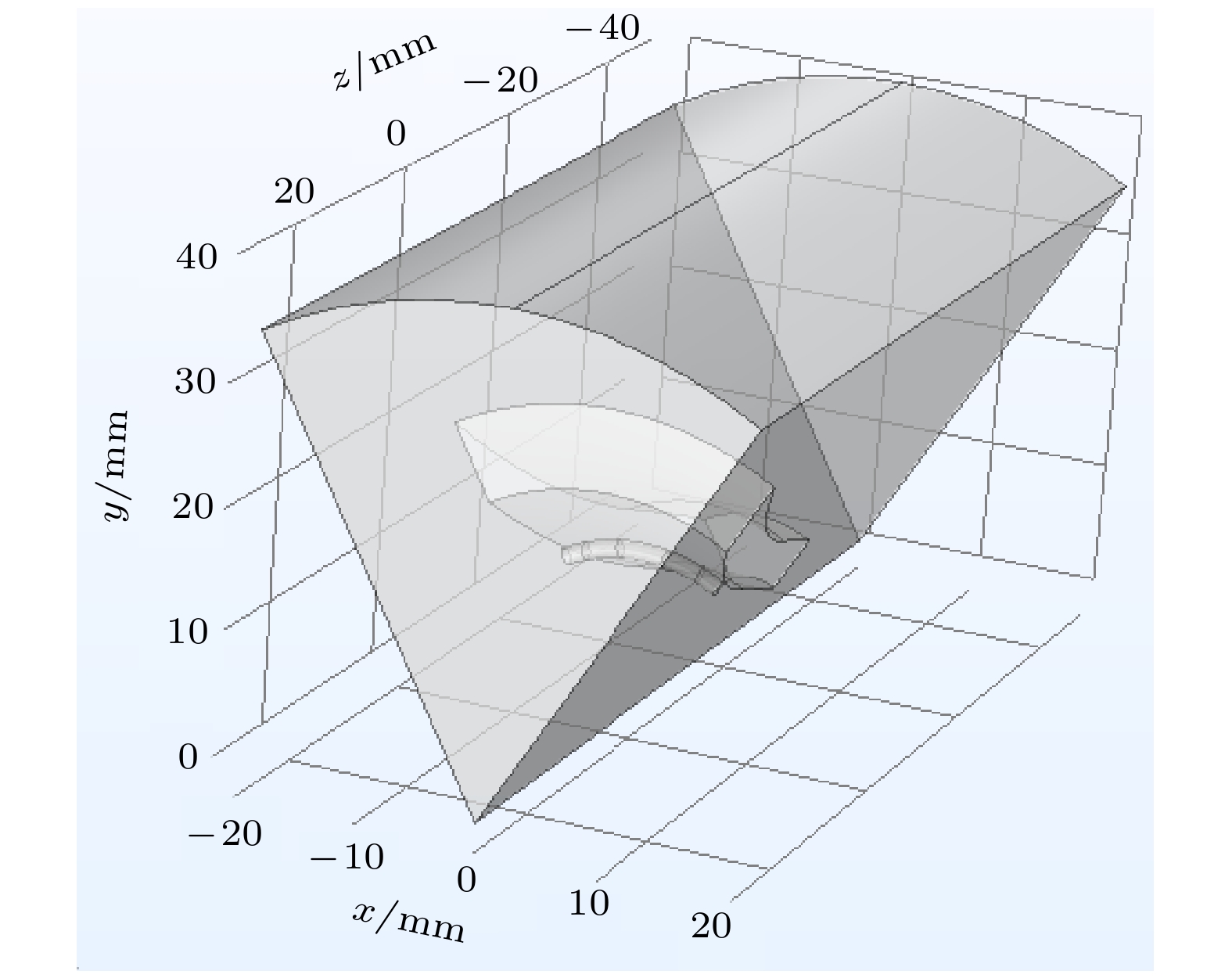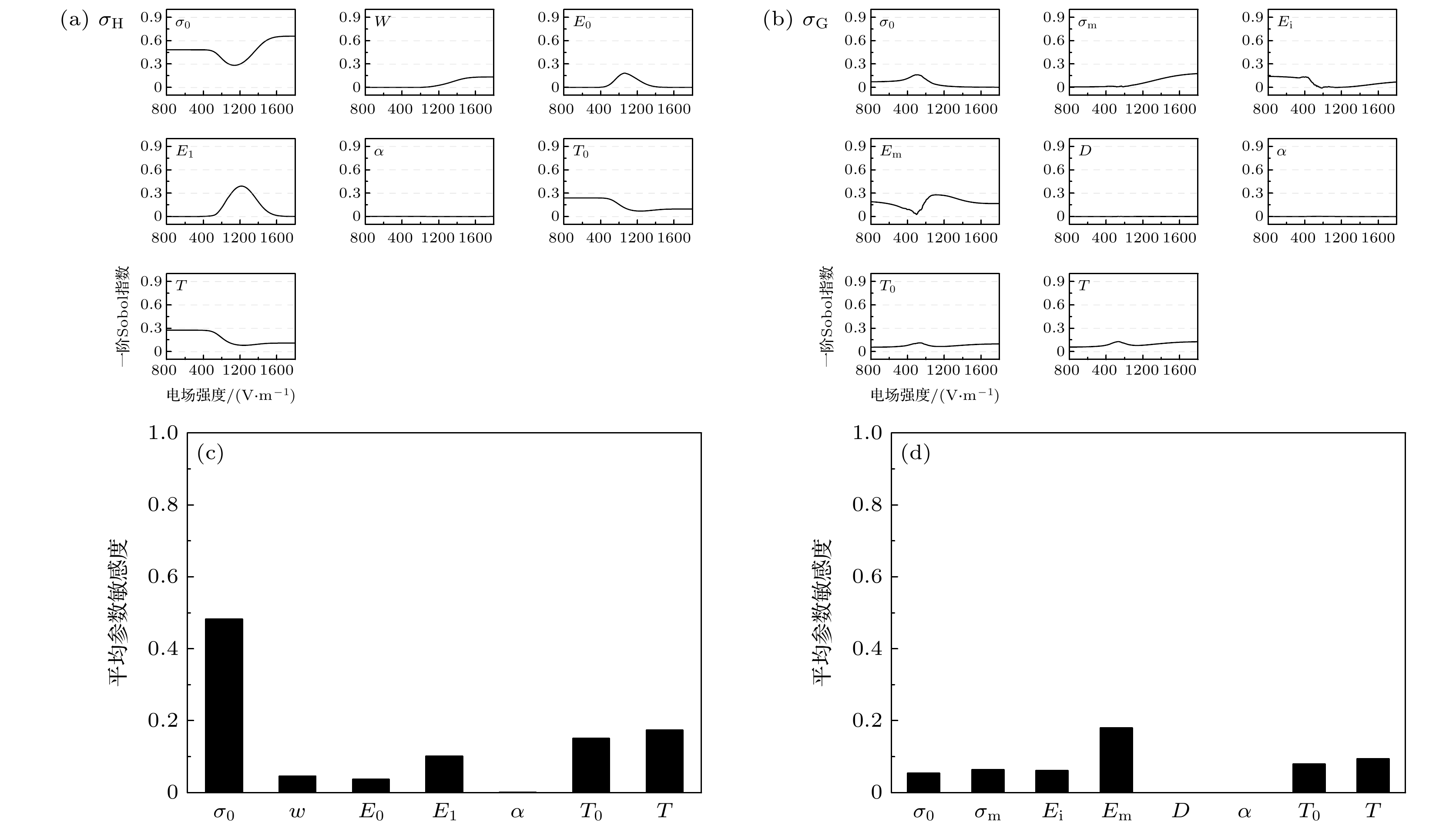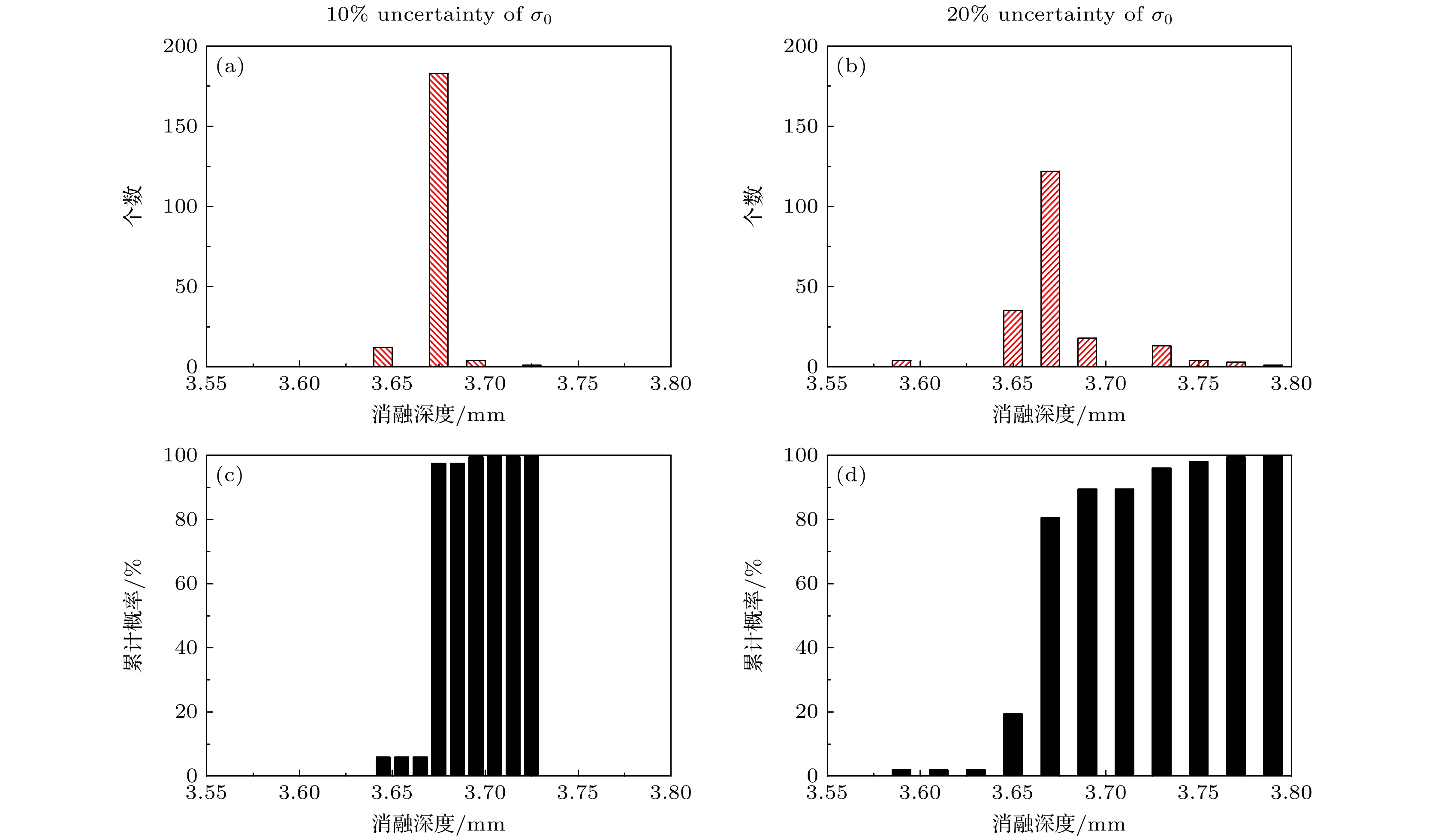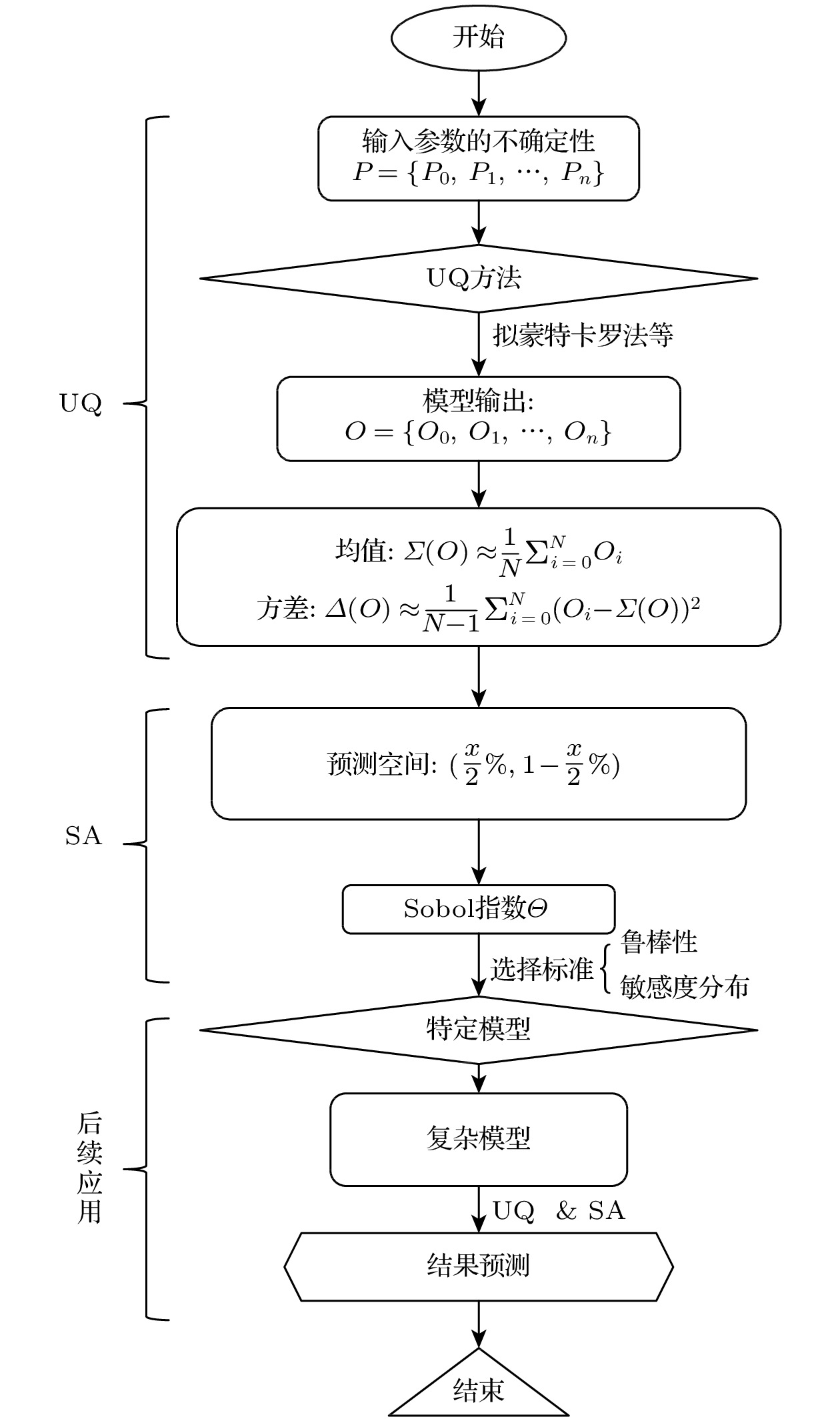-
Pulsed field ablation (PFA) is a new type of physical energy source in the fields of tumor and atrial fibrillation ablation, which is based on irreversible electroporation with non-thermal, clear ablation boundaries, selective killing, and rapid advantages. The PFA triggers off the changes in the electrical conductivity of ablation zone, which can be described by a step function and used to predict the ablation zone. However, current research does not compare the advantages and disadvantages of different conductivity models, nor does it consider the effects of model parameter change caused by individual differences and errors on the efficacy of PFA. This work is devoted to comparing two commonly used conductivity models (Heaviside model and Gompertz model), and quantifying the influence of model input uncertainty on model output and PFA ablation zone. In this work, we carry out uncertainty quantification and sensitivity analysis to quantify the influence of model parameter uncertainty on model output, clarify the parameter sensitivity distribution, and provide model selection criteria from the perspectives of model complexity, parameter sensitivity distribution, and model robustness. Combined with finite element simulation, the study quantifies the effects of uncertainty in the most sensitive parameters of the conductivity model and ablation threshold on the PFA ablation zone. The results show that different conductivity models exhibit different robustness under the same proportion of variation in parameters. The Heaviside model, which is determined by a single factor, has strong robustness. The uncertainty output of the Gompertz model is jointly determined by multiple sensitivity parameters, making it susceptible to various conditions. The ablation threshold and pre-treatment tissue conductivity are the two most sensitive parameters affecting the assessment of ablation depth. Changes in the ablation threshold result in a Gaussian distribution of ablation depth. The greater the change in pre-treatment tissue conductivity, the greater the change in ablation depth is, which, however, follows a nonlinear proportional relationship. This approach can improve the accuracy and reliability of PFA ablation prediction, and provide a visual and global way to show the influence of input uncertainties on model output and parameter sensitivity ranking, thus effectively improving the accuracy of model prediction, reducing computational costs, and optimizing the selection of candidate models. This strategy can be applied to a variety of mathematical physics and simulation models to enhance model credibility and simplify the models. -
Keywords:
- conductivity model /
- sensitivity analysis /
- electroporation /
- pulsed field ablation
[1] Ivorra A, Al-Sakere B, Rubinsky B, Mir L M 2009 Phys. Med. Biol. 54 5949
 Google Scholar
Google Scholar
[2] Sel D, Cukjati D, Batiuskaite D, Slivnik T, Mir L M, Miklavcic D 2005 IEEE T. Bio-Med. Eng. 52 816
 Google Scholar
Google Scholar
[3] Garcia P A, Rossmeisl J H, Davalos R V 2011 Annual International Conference of the IEEE Engineering in Medicine and Biology Society Guadalajara, Mexico, 30 Auguest–3 September, 2011 pp739–742
[4] Perera-Bel E, Aycock K N, Salameh Z S, Gómez-Barea M, Davalos R V, Ivorra A, Ballester M A G 2022 IEEE T. Bio-Med. Eng. 70 1902
[5] Neal R E, Garcia P A, Robertson J L, Davalos R V 2012 IEEE T. Bio-Med. Eng. 59 1076
 Google Scholar
Google Scholar
[6] Zhao Y, Bhonsle S, Dong S, Lyu Y, Liu H, Safaai-Jazi A, Davalos R V, Yao C 2018 IEEE T. Bio-Med. Eng. 65 1810
 Google Scholar
Google Scholar
[7] Shi F, Steuer A, Zhuang J, Kolb J F 2019 IEEE T. Bio-Med. Eng. 66 2010
 Google Scholar
Google Scholar
[8] 郭雨怡, 石富坤, 王群, 季振宇, 庄杰 2022 物理学报 71 068701
 Google Scholar
Google Scholar
Guo Y Y, Shi F K, Wang Q, Ji Z Y, Zhuang J 2022 Acta Phys. Sin. 71 068701
 Google Scholar
Google Scholar
[9] Shi F, Kolb J F 2020 Biosens. Bioelectron. 157 112149
 Google Scholar
Google Scholar
[10] Bounik R, Cardes F, Ulusan H, Modena M M, Hierlemann A 2022 BMEF 2022 9857485
[11] Corovic S, Lackovic I, Sustaric P, Sustar T, Rodic T, Miklavcic D 2013 BioMed. Eng. OnLine 12 16
 Google Scholar
Google Scholar
[12] Zhao Y J, Davalos R V 2020 Appl. Phys. Lett. 117 143702
 Google Scholar
Google Scholar
[13] 姚陈果, 郑爽, 赵亚军, 刘红梅, 王艺麟, 董守龙 2020 高电压技术 46 1830
Yao C G, Zhen S, Zhao Y Z, Liu H M, Wang Y L, Dong S L 2020 High Voltage Engineering 46 1830 (in Chinese)
[14] Smith R C 2013 Uncertainty Quantification: Theory, Implementation, and Applications (Vol. 12) (Siam)
[15] Lai X, Wang S, Ma S, Xie J, Zheng Y 2020 Electrochimica Acta 330 135239
 Google Scholar
Google Scholar
[16] Vazquez-Arenas J, Gimenez L E, Fowler M, Han T, Chen S K 2014 Energ. Convers. Manage. 87 472
 Google Scholar
Google Scholar
[17] Edouard C, Petit M, Forgez C, Bernard J, Revel R 2016 JOPS 325 482
[18] Ye X, Liu S, Yin H, He Q, Xue Z, Lu C, Su S 2021 Front. Cardiovasc. Med. 8
[19] 张家明 陈志坚 2022 临床心血管病杂志 38 851
Zhang J M, Chen Z J 2022 J Clin. Cardiol. 38 851
[20] O’Brien T J, Lorenzo M F, Zhao Y, Neal Ii R E, Robertson J L, Goldberg S N, Davalos R V 2019 Int. J. Hyperther. 36 952
 Google Scholar
Google Scholar
[21] Lemieux C 2009 Monte Carlo and Quasi-Monte Carlo Sampling (Springer, New York, NY)
[22] Haemmerich D, Schutt D J, Wright A S, Webster J G, Mahvi D M 2009 Physiol. Meas. 30 459
 Google Scholar
Google Scholar
[23] Sobol′ I M 2001 Math. Comput. Simulat. 55 271
 Google Scholar
Google Scholar
[24] Oliveira J F, Jorge D C P, Veiga R V, Rodrigues M S, Torquato M F, da Silva N B, Fiaccone R L, Cardim L L, Pereira F A C, de Castro C P, Paiva A S S, Amad A A S, Lima E A B F, Souza D S, Pinho S T R, Ramos P I P, Andrade R F S 2021 Nat. Commun. 12 333
 Google Scholar
Google Scholar
[25] Kaminska I, Kotulska M, Stecka A, Saczko J, Drag-Zalesinska M, Wysocka T, Choromanska A, Skolucka N, Nowicki R, Marczak J, Kulbacka J 2012 Gen. Physiol. Biophys. 31 19
 Google Scholar
Google Scholar
[26] Reddy V Y, Koruth J, Jais P, Petru J, Timko F, Skalsky I, Hebeler R, Labrousse L, Barandon L, Kralovec S, Funosako M, Mannuva B B, Sediva L, Neuzil P 2018 JACC: Clin. Electrophy. 4 987
 Google Scholar
Google Scholar
[27] Belalcazar A 2021 Heart Rhythm 2 560
 Google Scholar
Google Scholar
[28] Kos B, Zupanic A, Kotnik T, Snoj M, Sersa G, Miklavcic D 2010 J. Membrane Biol. 236 147
 Google Scholar
Google Scholar
[29] Shi F, Zhuang J, Kolb J F 2019 J. Phys. D 52 495401
 Google Scholar
Google Scholar
[30] Perera-Bel E, Mercadal B, Garcia-Sanchez T, Ballester M A G, Ivorra A 2021 IEEE T. Bio-Med. Eng. 68 1318
-
表 1 不同模型的参数
Table 1. Parameters for different models
参数 模型 Heaviside Gompertz σ0/(S·m–1) 0.23 0.23 α 0.02 0.02 T0/℃ 37 37 T/℃ 40 40 E0/(V·cm–1) 850 — E1/(V·cm–1 ) 1550 — W 0.90 — σm/(S·m–1) — 0.44 Ei/(V·cm–1) — 870 Em/(V·cm–1) — 1038 D — 18 -
[1] Ivorra A, Al-Sakere B, Rubinsky B, Mir L M 2009 Phys. Med. Biol. 54 5949
 Google Scholar
Google Scholar
[2] Sel D, Cukjati D, Batiuskaite D, Slivnik T, Mir L M, Miklavcic D 2005 IEEE T. Bio-Med. Eng. 52 816
 Google Scholar
Google Scholar
[3] Garcia P A, Rossmeisl J H, Davalos R V 2011 Annual International Conference of the IEEE Engineering in Medicine and Biology Society Guadalajara, Mexico, 30 Auguest–3 September, 2011 pp739–742
[4] Perera-Bel E, Aycock K N, Salameh Z S, Gómez-Barea M, Davalos R V, Ivorra A, Ballester M A G 2022 IEEE T. Bio-Med. Eng. 70 1902
[5] Neal R E, Garcia P A, Robertson J L, Davalos R V 2012 IEEE T. Bio-Med. Eng. 59 1076
 Google Scholar
Google Scholar
[6] Zhao Y, Bhonsle S, Dong S, Lyu Y, Liu H, Safaai-Jazi A, Davalos R V, Yao C 2018 IEEE T. Bio-Med. Eng. 65 1810
 Google Scholar
Google Scholar
[7] Shi F, Steuer A, Zhuang J, Kolb J F 2019 IEEE T. Bio-Med. Eng. 66 2010
 Google Scholar
Google Scholar
[8] 郭雨怡, 石富坤, 王群, 季振宇, 庄杰 2022 物理学报 71 068701
 Google Scholar
Google Scholar
Guo Y Y, Shi F K, Wang Q, Ji Z Y, Zhuang J 2022 Acta Phys. Sin. 71 068701
 Google Scholar
Google Scholar
[9] Shi F, Kolb J F 2020 Biosens. Bioelectron. 157 112149
 Google Scholar
Google Scholar
[10] Bounik R, Cardes F, Ulusan H, Modena M M, Hierlemann A 2022 BMEF 2022 9857485
[11] Corovic S, Lackovic I, Sustaric P, Sustar T, Rodic T, Miklavcic D 2013 BioMed. Eng. OnLine 12 16
 Google Scholar
Google Scholar
[12] Zhao Y J, Davalos R V 2020 Appl. Phys. Lett. 117 143702
 Google Scholar
Google Scholar
[13] 姚陈果, 郑爽, 赵亚军, 刘红梅, 王艺麟, 董守龙 2020 高电压技术 46 1830
Yao C G, Zhen S, Zhao Y Z, Liu H M, Wang Y L, Dong S L 2020 High Voltage Engineering 46 1830 (in Chinese)
[14] Smith R C 2013 Uncertainty Quantification: Theory, Implementation, and Applications (Vol. 12) (Siam)
[15] Lai X, Wang S, Ma S, Xie J, Zheng Y 2020 Electrochimica Acta 330 135239
 Google Scholar
Google Scholar
[16] Vazquez-Arenas J, Gimenez L E, Fowler M, Han T, Chen S K 2014 Energ. Convers. Manage. 87 472
 Google Scholar
Google Scholar
[17] Edouard C, Petit M, Forgez C, Bernard J, Revel R 2016 JOPS 325 482
[18] Ye X, Liu S, Yin H, He Q, Xue Z, Lu C, Su S 2021 Front. Cardiovasc. Med. 8
[19] 张家明 陈志坚 2022 临床心血管病杂志 38 851
Zhang J M, Chen Z J 2022 J Clin. Cardiol. 38 851
[20] O’Brien T J, Lorenzo M F, Zhao Y, Neal Ii R E, Robertson J L, Goldberg S N, Davalos R V 2019 Int. J. Hyperther. 36 952
 Google Scholar
Google Scholar
[21] Lemieux C 2009 Monte Carlo and Quasi-Monte Carlo Sampling (Springer, New York, NY)
[22] Haemmerich D, Schutt D J, Wright A S, Webster J G, Mahvi D M 2009 Physiol. Meas. 30 459
 Google Scholar
Google Scholar
[23] Sobol′ I M 2001 Math. Comput. Simulat. 55 271
 Google Scholar
Google Scholar
[24] Oliveira J F, Jorge D C P, Veiga R V, Rodrigues M S, Torquato M F, da Silva N B, Fiaccone R L, Cardim L L, Pereira F A C, de Castro C P, Paiva A S S, Amad A A S, Lima E A B F, Souza D S, Pinho S T R, Ramos P I P, Andrade R F S 2021 Nat. Commun. 12 333
 Google Scholar
Google Scholar
[25] Kaminska I, Kotulska M, Stecka A, Saczko J, Drag-Zalesinska M, Wysocka T, Choromanska A, Skolucka N, Nowicki R, Marczak J, Kulbacka J 2012 Gen. Physiol. Biophys. 31 19
 Google Scholar
Google Scholar
[26] Reddy V Y, Koruth J, Jais P, Petru J, Timko F, Skalsky I, Hebeler R, Labrousse L, Barandon L, Kralovec S, Funosako M, Mannuva B B, Sediva L, Neuzil P 2018 JACC: Clin. Electrophy. 4 987
 Google Scholar
Google Scholar
[27] Belalcazar A 2021 Heart Rhythm 2 560
 Google Scholar
Google Scholar
[28] Kos B, Zupanic A, Kotnik T, Snoj M, Sersa G, Miklavcic D 2010 J. Membrane Biol. 236 147
 Google Scholar
Google Scholar
[29] Shi F, Zhuang J, Kolb J F 2019 J. Phys. D 52 495401
 Google Scholar
Google Scholar
[30] Perera-Bel E, Mercadal B, Garcia-Sanchez T, Ballester M A G, Ivorra A 2021 IEEE T. Bio-Med. Eng. 68 1318
Catalog
Metrics
- Abstract views: 1673
- PDF Downloads: 48
- Cited By: 0















 DownLoad:
DownLoad:






